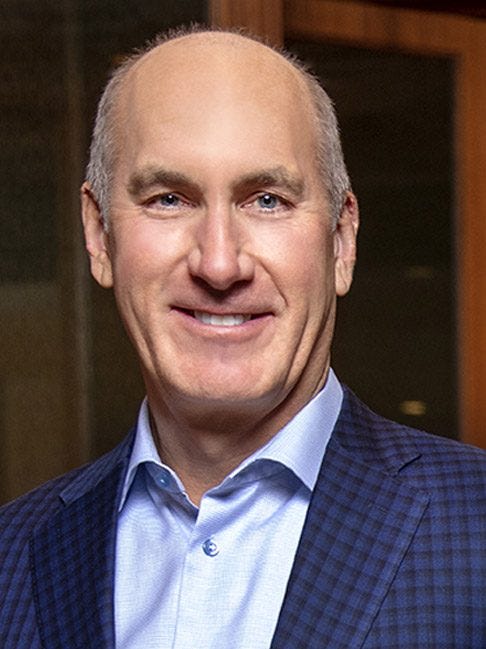AT&T Earnings: Execs Eye Copper-to-Fiber Transition as Key Wireline InitiativeAT&T Earnings: Execs Eye Copper-to-Fiber Transition as Key Wireline Initiative
AT&T CEO John Stankey said an increased emphasis on fiber will grow margins in the carrier's business wireline segment.

AT&T plans to revamp its business wireline unit by bringing in more advanced and cost-effective fiber connectivity and utilizing fixed wireless more, according to executives speaking in the latest AT&T earnings call.
The company announced its first quarter results on Thursday, revealing an operating revenue of $30.1 billion for the quarter. That increased 1.4% year-over-year. AT&T leaders said the company saw revenue increases in mobility, consumer wireline and its Mexico unit. Moreover, quarterly operating income increased from $5.5 billion a year ago to $6 billion. Operating expenses barely changed from $24.2 billion a year ago to $24.1 billion in the first quarter AT&T earnings.
The AT&T earnings report comes as the company continues to center its core competency on connectivity. The company said when it sold its media division in 2021 that it was putting its focus on 5G and fiber to meet “substantial, long-term demand for connectivity.” And the latest quarterly report shows that evolution AT&T is making.
Wireless Opportunities
AT&T saw strong growth on the business wireless side, increasing 7% in service revenues. AT&T attributed the growth in part to its FirstNet program for first responders. FirstNet grew sequentially by about 300,000 wireless connections, according to AT&T.

AT&T’s John Stankey
CEO John Stankey drew analysts’ attention to wireless growth in the earnings call.
“Something I would ask you not to lose is, we’re coming off the most profitable quarter and most lucrative EBITDA generation in our wireless business in its history, and it’s got the goodness of low churn, higher ARPU and customer growth,” he said.
Mark Venuto, chief operating officer at the AT&T partner US Network, said his firm has been delivering fixed wireless solutions in certain locations where it might previously have sold wireline.

US Networks’ Mark Venuto
“In cases where a large business with multiple locations has low traffic and does not require a dedicated wireline circuit for internet or voice/data, an alternative option we consider is fixed wireless,” he told Channel Futures. “We conduct thorough testing to assess signal strength and available speeds, and if it meets the customer’s requirements, fixed wireless becomes a viable solution for them.”
Wireline
Many quarterly earnings releases in the telco world show the state of declining business wireline revenues. The latest AT&T earnings were no exception, and AT&T executives acknowledged those headwinds. While consumer wireline EBITDA grew 3.2% year-over-year, business wireline EBITDA declined by $230 million year-over-year.
“Our rationalization process in business wireline also continues as we remain focused on the opportunities that 5G and fiber expansion create, particularly in the small and midsize business category,” AT&T chief financial officer Pascal Desroches said.

AT&T’s Pascal Desroches
Venuto said wireline isn’t going away; however, the use of wireline may not cast as wide a net as before.
“Wireline services still offer the potential for increased speeds. However, the cost continues to decline. Moreover, wireline usage now tends to focus more on Internet and VoIP/UCaaS, rather than internet and POTS, resulting in a ‘zero-sum game,'” Venuto said.
Wireline Transformation
AT&T has been clear in its intention to move the core of its wireline network business from copper-based offerings to fiber. The company has been retiring copper facilities for the last several years. Stankey said that motion will play a key part in AT&T’s efforts to “accelerate cost takeout” in 2023. Stankey said AT&T ultimately wants to replace copper with fiber connectivity, and in some cases wireless-based offerings.
“Think about a cost structure that’s no longer anchored to legacy network technologies and software stacks. For example, in addition to all of fiber’s enhanced resiliency and superior transport characteristics, we’re already seeing that fiber uses less energy, costs less to maintain and requires fewer service dispatches. And as we reduce our copper services imprint and related legacy infrastructure, we expect to consistently improve our margins, grow EBITDA and ultimately improve our capital efficiency,” Stankey said.
AT&T sales partners and their customers have confirmed that AT&T and other ILECs have taken strides to make the transition away from copper. That has involved looming shutoffs of facilities as well as price hikes on copper.
Brian Washburn, Omdia’s research director for service provider enterprise and wholesale, has told Channel Futures the price hikes in many ways reflect the FCC allowing carriers to charge customers what POTS lines actually cost them.

Omdia’s Brian Washburn
“[In the] old telco model there were maybe 1,000 telephone customers on five miles of copper plant. Now you’ve got maybe 80 customers on that same five miles of copper plant, but it still needs to be maintained; it still needs to be repaired. You still need the central office tech. You still need your line techs,” Washburn said in March.
Quarterly fiber revenue numbered $1.5 billion in the latest AT&T earnings, up from $1.1 billion a year prior (including both fiber and consumer). The company added that it can serve more than 3 million business customer locations with fiber.
SMB

North Atlantic Consultants’ Michael Agri
Telcos have opened up more about their ambitions with the small and medium-size business segment in the last year. Stankey said SMB represents a “historically underrepresented segment.” The company recently stated in its annual report that it expects to offset business wireline revenue declines with connectivity growth among SMBs.
Michael Agri, president of North Atlantic Consultants, said AT&T will need to make up ground among smaller customers.
“The good news for AT&T is that …… they’re still a force when it comes wireless and fiber services. The bad news is that they’ve lost the confidence of the SMB market, who favor the cable providers for a much better product in terms of pricing, reliability, and often times without any contractual obligations,” Agri told Channel Futures. “The UCaaS providers have also been eating away at legacy AT&T voice services for many years now.”
At the same time, price compression on wireline doesn’t appear to be heavily impacting the partners targeting larger customers, Venuto said.
“It is anticipated that the decline in wireline revenue will impact the small business sector more significantly than the midmarket and enterprise customers,” Venuto told Channel Futures. “The latter typically have multiple locations with more complex network topologies than a small branch comprising 10 or 20 employees.”
Wireless Go-to-Market Investments
One analyst asked Stankey if AT&T will resize its advertising and marketing budgets for wireless. Stankey responded that he doesn’t expect much of a change.
“I won’t say that there are going to be any substantial changes in anything that you see on distribution channel costs or go-to-market costs that would be anything different than the variable cost of moving from volume of 700,000 net adds to 400,000 net adds that might flow through things like commissions and equipment costs, etc., that are pretty typical,” he said.
Partner Perspective
The technology advisor (agent) channel emerged decades ago out of the telecom carrier world. Many enterprise sales reps left their employers to form their own agencies that brokered carrier services in a vendor-neutral fashion that helped customers save money.
But Agri noted that many technology advisors in recent years have centered their practices around unified communications as a service (UCaaS). He said his own firm has been riding a “massive wave” in UCaaS for at least five years.
“The huge SPIFFs and generous residual commissions have made wireline services an afterthought. It’s also a huge problem for many businesses who are struggling to manage their old PBX, or they can’t find anyone to manage or train them on their old first generation VoIP system. There is a lot of confusion out there right now, which creates a lot of opportunity for agents,” Agri told Channel Futures.
Want to contact the author directly about this story? Have ideas for a follow-up article? Email James Anderson or connect with him on LinkedIn. |
About the Author
You May Also Like


